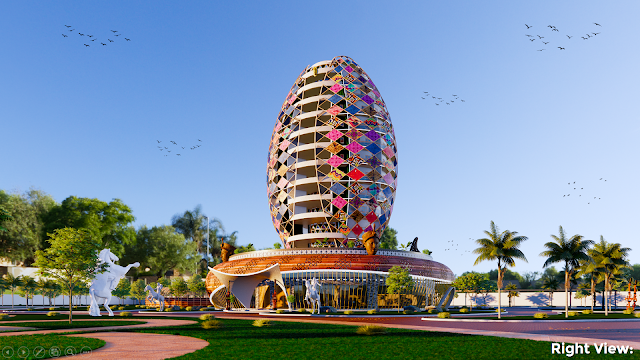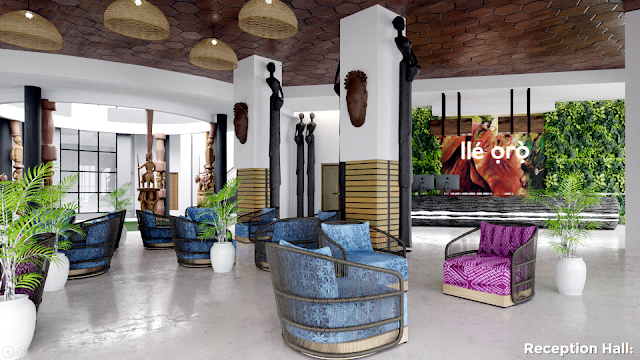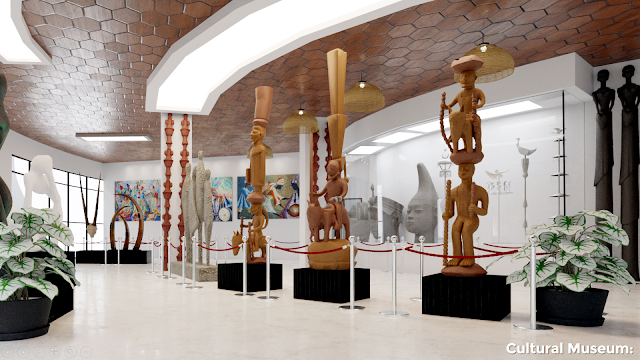Ilé ọrọ ̀ is a Yoruba translation for “house of wealth” and in other translations “house of riches”. Every time culture is a subject of discussion, we all try to express how rich our individual culture is. The truth is words alone cant express how rich any culture is.
Adelaja Fawaz is an African (Yoruba) architectural designer, he preferred to express the riches of his yoruba culture in this design with a statement noticeable from miles away. One that speaks the native language… a cultural landmark that beats the test of time. The ilé ọrọ ̀ resort.
Play video below to watch the design Quick Animation.
The resort concept is from a cowrie shell and Yoruba divination tray. Cowries were used as currency for centuries in west Africa, it is viewed as a symbol of wealth and well being and are commonly used in jewelry and other decorative pieces. They are also used during divination by casting them down on a divination tray to reach out to the ancestors. Doing this in this design, Fawaz idea is for the cowrie to permanently be on the tray... Meaning the ancestors are going to constantly be in the building with us.
Play video below to watch the full design Presentation.
25 ELEMENTS OF TRADITIONAL YORÙBÁ ARCHITECTURE

















Great job, with this work of yours I should have to embrace architecture fully.
ReplyDeleteYes you should... Thank you
DeleteSo beautiful! Great job.
ReplyDeleteThank you
DeleteA most remarkable submission by Fawaz Adelaja on the CPDI Africa platform, his interpretation of Yoruba architecture was phenomenal! He is leaing a new narrative in contemporary design languages for Nigeria and the African Diaspora! Nmadili Okwumabua, founder, CPDI Africa! #AfricaDefinesArchitecture
ReplyDeleteThank you ma
DeleteGreat job 👍
ReplyDeleteThis is inspiring and impressive. Keep it up.
ReplyDeleteMay God bless your handiwork. The sky is too close to be your limit. AEC. Ganiyu
ReplyDeleteamin, thank you very much sir
DeleteWow this is beautiful the interior design is on point and the Alo pavilion is top-notch.
ReplyDelete👏👏👏
Arch. howells! thank you sir
DeleteCreativity at its finest, will love to tap into your fountain of knowledge.
ReplyDeleteYou are very welcome, I'm always open. Thank you sir
Delete